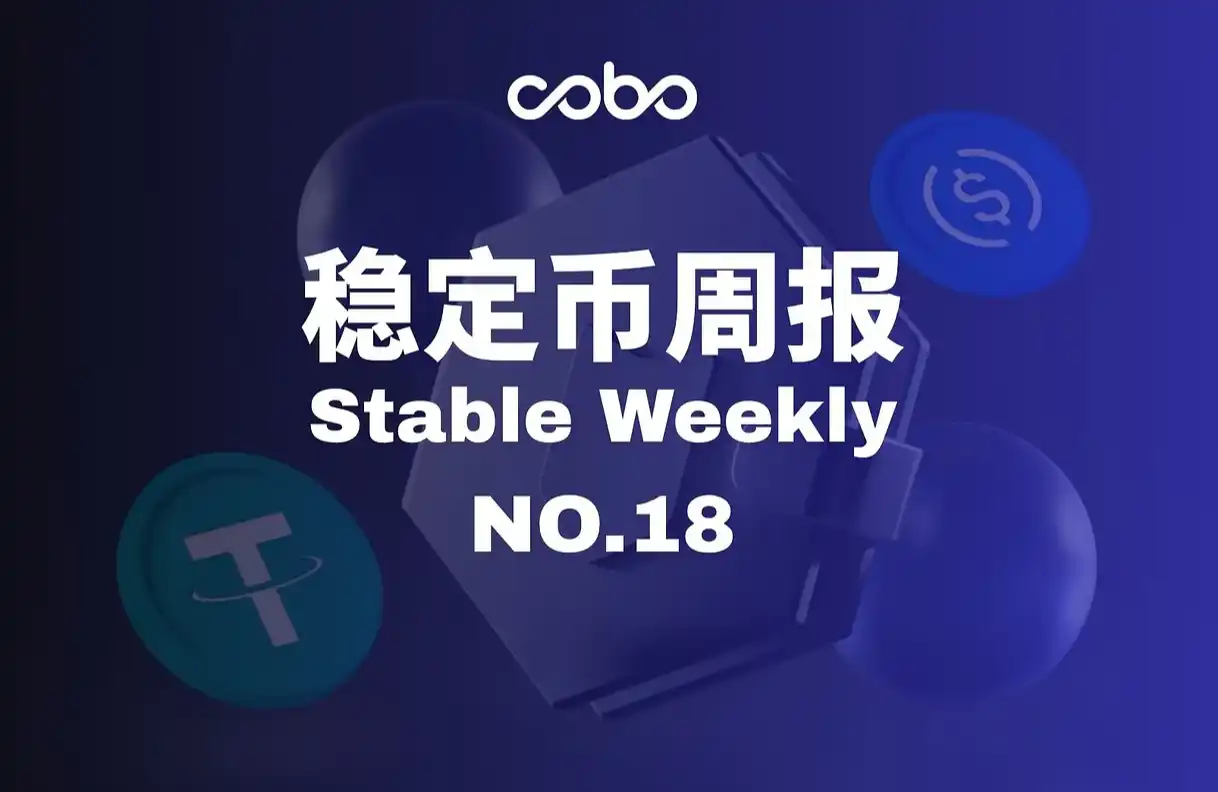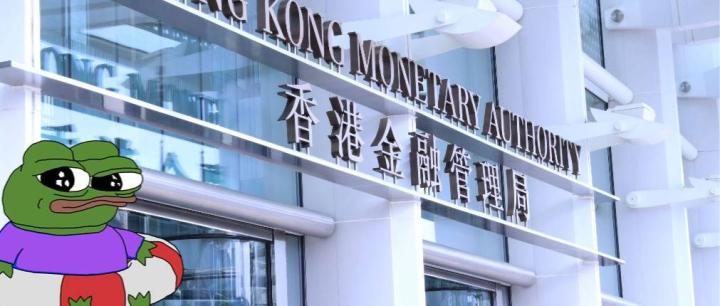Author: Liu Lanxiang, FORTUNE

Image source: Visual China
The global stablecoin landscape is undergoing profound reshaping. The passage of the US Stablecoin Act has accelerated the tokenization process dominated by the US dollar, while Singapore's adjustment of the crypto ecosystem indirectly created a development window for Hong Kong. Meanwhile, the active steps of Middle Eastern countries like the UAE in asset tokenization also pose new challenges to traditional financial centers. Against this backdrop, Hong Kong is establishing its position in the stablecoin field and accelerating the construction of its virtual asset center status through its transparent, efficient regulatory framework and financial innovation capabilities.
The Hong Kong Stablecoin Ordinance took effect on August 1. Three days before the law's implementation, the Hong Kong Monetary Authority (HKMA) issued two Explanatory Notes related to the stablecoin licensing system and application procedures, stating that institutions intending to apply for a license can express their willingness to the HKMA within August, and institutions ultimately deciding to apply must submit their application and materials by September 30 or before. HKMA Deputy Chief Executive Chen Weimin revealed that the first-phase licenses will be issued in early 2026, with the number of initial licenses being in single digits.
At the moment of stablecoin's official launch, it is worth noting that HKMA Chief Executive Eddie Yue stated on July 23 that stablecoins, as an emerging payment tool entering the traditional financial system through regulation, have positive significance, but it is necessary to prevent market and public opinion from overhyping stablecoins and to implement the Stablecoin Ordinance according to prudent and sustainable principles.
As the largest licensed virtual asset exchange in Hong Kong, HashKey Exchange's leader Ru Haiyang strongly agrees with this, directly stating in a recent exclusive interview with FORTUNE that "capital markets should avoid overhyping the stablecoin concept". His professional background also provides a unique cross-industry perspective for observing this landscape.
[The translation continues in the same professional and accurate manner, maintaining the specific crypto-related terminology translations as requested.]HashKey Group's ecosystem and business segments are very rich. First is the digital asset exchange, which I am responsible for, with Hong Kong as our bridgehead, while continuously pursuing global deployment. We now have licenses and are operating in major onshore financial centers such as Singapore, Japan, UAE, and Europe. Second is asset management, including our own VC fund, which has invested in over 600 blockchain projects. We have also expanded from the primary market to the secondary market, including spot ETF and Top 20 index funds. Third is the chain business department and tokenization business, including on-chain node staking and blockchain solutions for financial institutions (such as assisting fund companies in issuing tokenized products). To address financial institutions' security concerns, we launched our own public chain at the end of last year. This Layer 2 chain based on ETH has custody of nearly $200 million in assets from multiple financial institutions, making it one of the largest compliant public chains in Asia. From trading to asset management to on-chain infrastructure services, we have achieved a closed loop that other digital exchanges do not possess.
Fortune: How do you, as a compliant exchange, collaborate with traditional financial institutions? What frictions and breakthroughs have you experienced?
Ru Haiyang: In terms of fiat currency channels, we've gone through some processes, and some banks' risk control remains conservative, often "blocking" transactions involving exchanges. We have established cooperation with Standard Chartered, Zhong An, Deutsche Bank, and some Chinese banks, and hope that industry policies and bank risk controls will progress simultaneously. Currently, if a customer's bank blocks a transaction, they may consider switching to a more open bank. Many banks don't understand how strong our on-chain anti-money laundering technology is, as we can make everything traceable on-chain, which is difficult for traditional banks to achieve. I believe that with the implementation of stablecoin regulations in the US and Hong Kong, more banks will shift their mindset and gradually enter this market.
Fortune: How has your exchange's customer growth been since last year? Do you have any particularly surprising actual cases?
Ru Haiyang: Over the past year, our individual customer numbers have doubled, and institutional and corporate customer numbers have grown twofold. Since BlackRock began establishing a Bitcoin ETF early last year, internet brokers and Hong Kong and Chinese brokers have gradually entered the market, driving growth. In this market trend, Bitcoin and ETH's new highs are driven by institutions, which is very different from previous retail-led participation. The most surprising case was in July last year when an electric battery enterprise approached us. Initially, we thought they just wanted to invest in digital assets. After deeper understanding, we discovered that some upstream suppliers required stablecoin payment for bulk raw material purchases, with single transactions involving millions of dollars. As a compliant fiat-to-stablecoin channel, we became their first choice.
We originally thought digital assets were mainly for personal investment and financial speculation. Unexpectedly, traditional industries like energy, gold, small commodities, and shipping are spontaneously using stablecoins for large cross-border payments. Stablecoins have higher cross-border settlement efficiency - bank transfers take 1-2 days, sometimes requiring multiple intermediaries and facing strict regulations, while stablecoins can be transferred in one minute, meeting enterprises' requirements for cost, efficiency, and compliance. Compliant exchanges with licenses and strict anti-money laundering and KYT traceability capabilities align well with these enterprises' needs. The industry's spontaneous evolution and innovation are happening faster and at a larger scale than we imagined. At the Web3 conference in April, I mentioned that under trade tariff wars, countries worldwide will further promote stablecoin applications, and I believe there will be explosive growth in the short term.
[The rest of the translation follows the same professional and accurate approach]Here's the English translation:Ru Haiyang: The Hong Kong Securities and Futures Commission acted very quickly this time, with an open policy. The stablecoin legislation does not restrict the issued currencies, and issuers can issue Hong Kong dollars, US dollars, euros, offshore RMB, etc., depending on the richness of application scenarios. There is a high probability of first piloting with Hong Kong dollar stablecoins, entering from financial products and cross-border trade scenarios. Hong Kong itself is the largest re-export trade center, with a strong foundation in bulk commodity settlement and overseas corporate investments. As an international financial center, Hong Kong has natural connections with major global markets and institutions, serving as a window for global clearing and settlement, and facilitating the participation of Chinese major banks and leading enterprises in issuance, circulation, and custody. The policy will gradually open up and guide this process.
Fortune:With Hong Kong launching stablecoins, what impact will these innovations have on the financial systems of other Asian regions?
Ru Haiyang: This depends on the robustness of each country's financial system, especially the stability of its local currency and the sophistication of its payment system. If a country's local currency is stable and mobile payments are advanced (e.g., low merchant transaction fees), with high inter-bank fund clearing efficiency, people will still rely on the banking account system. In the short term, stablecoins will primarily impact cross-border payment scenarios, including trade and labor remittances. In the Asian market, economies like Vietnam, Philippines, Indonesia, Thailand, and Malaysia have developed banking and payment systems, so stablecoins will mainly play a role in cross-border payment scenarios. For example, labor remittances between Hong Kong, the Middle East, and the Philippines are gradually shifting from traditional Western Union transfers to stablecoins. For countries with unstable local currencies, less robust monetary policies, and relatively underdeveloped payment systems, traditional financial systems will be more significantly impacted, as currently happening in Africa and South America.
Strengthening Ecological Collaboration Across Different Licenses -Creating a "Serengeti Plains"
Fortune: Stablecoins are a type of digital asset. Comparing Hong Kong with Singapore and Middle Eastern countries' digital asset market prospects, who has greater potential?
Ru Haiyang: In the past two years, Singapore was extremely crypto-friendly, but due to anti-money laundering issues, it has started driving out non-compliant institutions, which has affected its existing digital asset ecosystem and provided an opportunity for Hong Kong to develop a global digital asset center. However, the Middle East, especially Dubai, is now a crucial competitor to Hong Kong, as Dubai's regulations are more flexible and its innovation pace is faster. For instance, while Hong Kong's stock tokenization is constrained by specific regulations, focusing mainly on fund and note-type tokenized products, the UAE's regulatory bodies are promoting on-chain stock listings. Theoretically, investors could buy on-chain global stocks like Apple and Tesla in onshore financial centers, even trading unlisted company shares. The Middle East, with its initially weak financial infrastructure, is boldly using blockchain technology to seize the international financial center's new high ground. In comparison, Hong Kong has systemic advantages and is gradually accelerating innovation, potentially opening derivatives trading in the second half of the year. If it can further strengthen coordination with regional regulatory bodies, we are confident about Hong Kong developing into a global digital asset center.
Fortune:You were the Chief Risk and Compliance Officer of HashKey Group last year. Now leading the exchange business group, how will you balance innovation speed with compliance costs?
Ru Haiyang: Compliance is not just a cost, but more of a business barrier. For cold wallets, Hong Kong regulations require top compliant exchanges to adopt HSM cold wallet technology. We internally built a corresponding wallet system and purchased the world's largest digital asset insurance coverage, which increased operational costs but significantly enhanced asset security. Like the Bybit theft case causing $1.5 billion in asset losses, cold wallet isolation and insurance would likely yield different results. Compliance "complexity" sometimes provides rigid risk prevention. Another example is anti-money laundering, where compliance processes drive significant investment in KYC systems, on-chain checks, compliance risk control, and service integrations, such as introducing wallet address full-chain traceability to track each fund's "birth to endpoint" on-chain circulation.
Our anti-money laundering precision and traceability depth even surpass traditional banking systems. The higher compliance standards, the more operational, risk control, and R&D levels are forcibly elevated, winning institutional client trust. Facing short-term operational pressures from compliance requirements, we proactively communicate with regulators like the Hong Kong SFC, often proposing innovative operational models like insurance cost optimization and liquidity cost optimization. Global regulators are focusing on business sustainability, providing policy windows and flexibility for "innovative and safe" projects. Only through proactive communication and transparent compliance can innovation gain space and support. Compared to non-compliant institutions' "short-term high growth, long-term high risk" models, we continuously refine products and services within compliance boundaries, making it easier to develop barrier-protected, stable, and continuously profitable business models.
Fortune:From a licensing perspective, what is your global deployment core strategy? Are you currently applying for any new licenses?
Ru Haiyang: We highly value obtaining compliant digital asset licenses in mainstream onshore financial centers, being the only company licensed in Hong Kong, Singapore, Tokyo, Dubai, and upgrading our European license to the new MiCAR framework. Different market regulatory environments and trading structures require varied business strategies. In the Middle East, Dubai's geographical advantages, city openness, talent, and capital inflow create a vibrant digital asset ecosystem, but local trading focuses more on cross-border payment transactions rather than crypto asset investments.
For licensed markets, our challenge is expanding license business scope, like extending to derivatives trading in Hong Kong. Licenses are about quality, not quantity. In unlicensed markets, we prefer collaborating with local licensed institutions rather than operating independently, as local synergy quickly integrates local regulatory and business resources. In Southeast Asia, we recently established a strategic partnership with Coins.ph, the Philippines' largest digital asset trading platform. We also aim to promote cross-jurisdictional standard mutual recognition to expand exchanges' scale effects. Different license types should enhance ecological collaboration, with stablecoin issuers and exchanges having strongly coupled cooperative relationships, as stablecoin cash-out activities primarily occur on exchanges. In Hong Kong, we are communicating and collaborating with several stablecoin license applicants to fully leverage each other's license advantages.
The digital asset scale currently accounts for less than 1% of global financial assets, with significant growth potential. However, the financial regulatory system remains fragmented by country and region, with no single company able to achieve full coverage. This industry needs to build an ecosystem similar to the "Serengeti Plains," where different jurisdictions and licensed entities should strengthen cooperation and collaboration to collectively create industry prosperity.
Fortune:It is reported that Hong Kong's digital asset talent gap is as high as 100,000. What insights does HashKey have in team building? What advice would you give to those hoping to transition from traditional finance to the digital asset field?
Ru Haiyang: The biggest challenge in our team building is the integration of diverse cultures and backgrounds. Currently, our team composition is one-third from crypto, mobile internet, and traditional finance backgrounds, but they all have their own thinking inertia, and the difficulty lies in how to align and reach a consensus. We value colleagues who are "open-minded and quick learners," encouraging everyone to rethink what a compliant exchange is using first principles. For traditional financial talents looking to join the digital asset industry, the most important thing is to maintain an open mindset, actively learn new technologies and regulatory trends, and find the right positioning and opportunities by understanding the underlying logic. The underlying logic of risk assets and innovative applications is actually interconnected with traditional finance and mobile internet. Compliant digital assets have just opened the door to a new world, and Chinese companies and talents should seize the opportunity to move to the forefront of the world. (Fortune Chinese Network)








